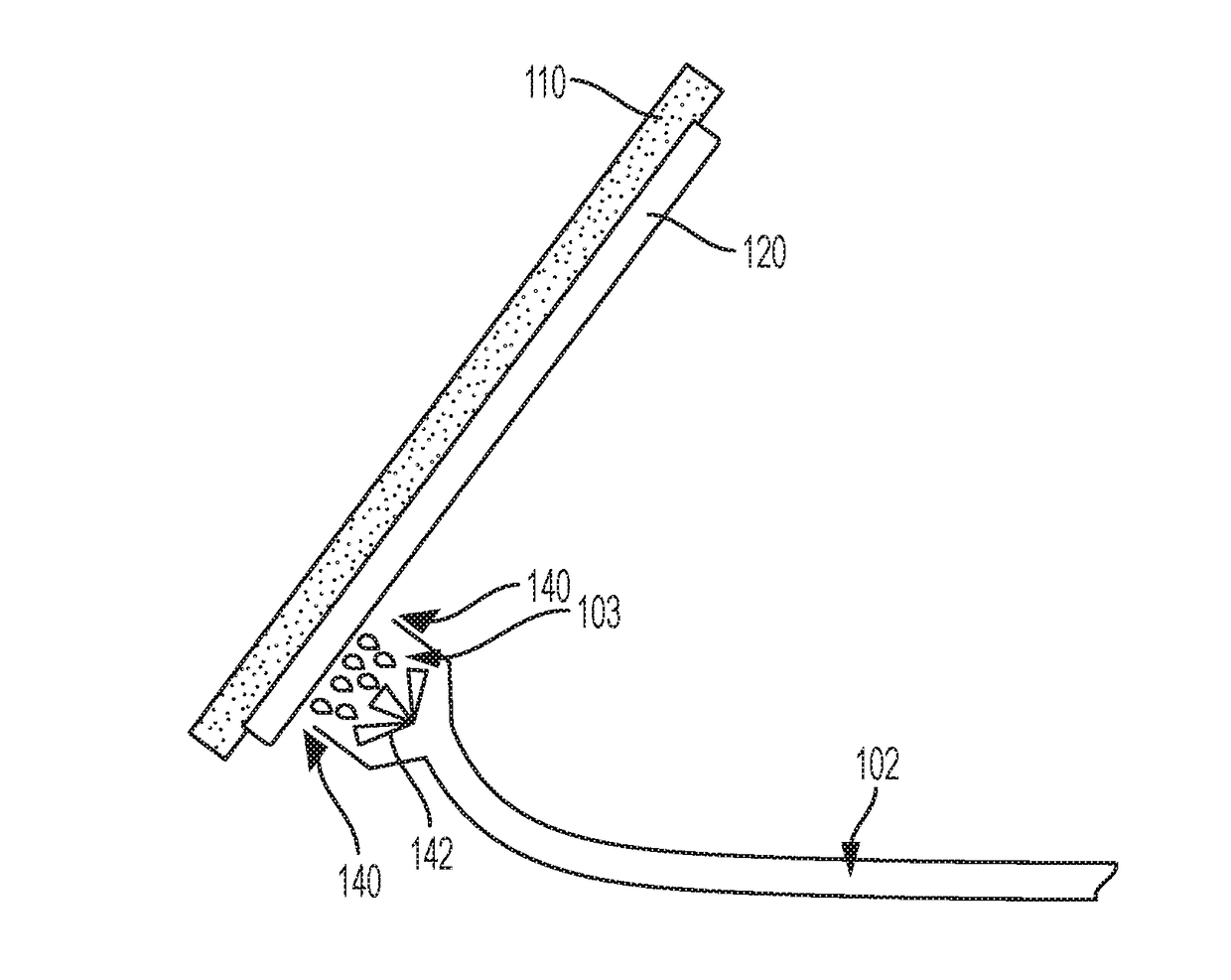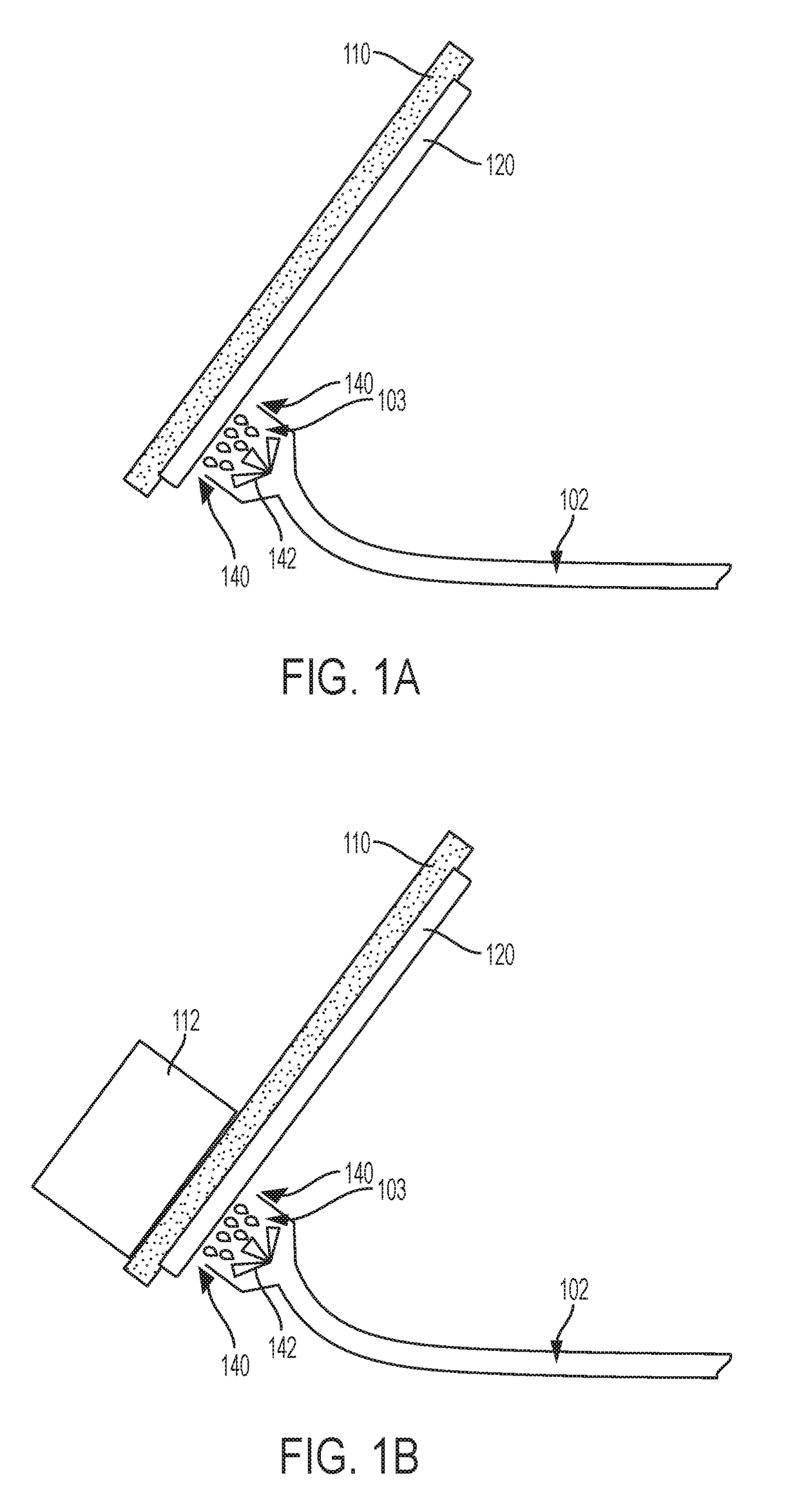Tissue softness by waterless chemistry application and processes thereof
- Summary
- Abstract
- Description
- Claims
- Application Information
AI Technical Summary
Benefits of technology
Problems solved by technology
Method used
Image
Examples
example 1
[0067]Various viscosity modifying agents were mixed with Softener PA-A (a mixture of sorbitan oleates and ethoxylated alkyl amines) to evaluate the impact on uniformity of coverage, % retention, and sensory softness (SS). Viscosity modifying agents with a range of hydrophobicities (TERGITOL 15-S-3, TERGITOL 15-S-7, FINSOLV TN, and TWEEN 20) were compared, as well as aliphatic viscosity modifying agents such as isopropyl myristate. For a control comparison, the softener compositions were diluted to 2.5-5% with water. The HLB was used as a measure of the viscosity modifying agent's degree of hydrophobicity / hydrophilicity. Waterless softener application trials were conducted on a structured web making paper machine.
[0068]The following Softener PA-A Softener and viscosity modifying agent combinations were evaluated:[0069]1. PA-A LV (“Low viscosity PA-A” with 3% glycol-type diluent)[0070]2. PA-A+10% TERGITOL 15-S-3 (TERGITOL 15-S-3 is a secondary alcohol ethoxylate hydrophobic wetting ag...
example 2
[0076]
TABLE 3Converting specificationsSpecs / WinderParameterConversion ProcessGluingNo. of Plies2Emboss PatternU19 (300-00436)
[0077]Using the above parameters, the finished tissues were tested for sensory softness (SS) and physical properties
[0078]As shown in Table 4, the undiluted (substantially water-free) Softener PA-A combined with the emollient provided about a 0.3 higher sensory softness compared to water alone (no softener). All of the viscosity-modified PA-A's provided similar or better softness than diluted application of the VARISOFT GP B 100 softener (a mixture of imidazolium compounds) and PA-A.
[0079]No significant impact on the Yankee drying process was observed. In particular, no coarse crepe, banding, uneven buildup of coating, picking, etc. occurred. The same coating settings were used for the diluted and undiluted softeners.
TABLE 4Comparison of finished productsVARISOFTPA-A + 10%GP BPA-APA-ATERGITOL 15-TERGITOL 15-TWEENFinsolvIsopropylChemistry100PA-AWaterLVLVS-3S-72...
example 3
[0080]FIG. 2 shows the tissue sensory softness as a function of geometric mean tentile (GMT) for the various cells. All the cells made using either diluted or undiluted (substantially water-free) spray softener resulted in sensory softness of 18.7 or 18.8. Tissues without any softeners had a sensory softness of 18.4 (see also Table 4). These results demonstrated the advantage of substantially water-free (undiluted) softeners, which also provide comparable sensory softness to diluted softeners (˜0.3 higher).
PUM
| Property | Measurement | Unit |
|---|---|---|
| Fraction | aaaaa | aaaaa |
| Fraction | aaaaa | aaaaa |
| Percent by mass | aaaaa | aaaaa |
Abstract
Description
Claims
Application Information
 Login to View More
Login to View More - Generate Ideas
- Intellectual Property
- Life Sciences
- Materials
- Tech Scout
- Unparalleled Data Quality
- Higher Quality Content
- 60% Fewer Hallucinations
Browse by: Latest US Patents, China's latest patents, Technical Efficacy Thesaurus, Application Domain, Technology Topic, Popular Technical Reports.
© 2025 PatSnap. All rights reserved.Legal|Privacy policy|Modern Slavery Act Transparency Statement|Sitemap|About US| Contact US: help@patsnap.com



